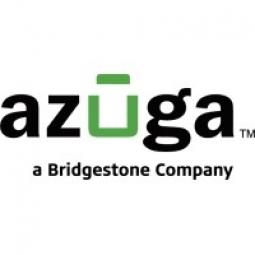公司规模
Mid-size Company
地区
- America
国家
- United States
产品
- Azuga Fleet Maintenance Reminders
- Azuga Speeding Alerts
- Azuga fleet tracking software
技术栈
- Fleet Tracking System
- Vehicle Maintenance Notification System
实施规模
- Enterprise-wide Deployment
影响指标
- Productivity Improvements
- Cost Savings
技术
- 功能应用 - 车队管理系统 (FMS)
适用行业
- 零售
适用功能
- 物流运输
用例
- 车队管理
- 车辆性能监测
服务
- 系统集成
关于客户
Mayesh Wholesale Florist, Inc. is a family-owned and operated business that was originally founded in 1938. The company supplies a large variety of fresh floral products sourced from premier growers around the world. Mayesh operates out of 16 branches in 8 states and is headquartered in Los Angeles. The company manages a fleet of 65 vehicles and counting. As a wholesale florist, Mayesh is responsible for the delivery of fresh floral products to various locations, making fleet management a crucial aspect of its operations.
挑战
Mayesh Wholesale Florist, a family-owned business operating out of 16 branches in 8 states, was facing several challenges with its fleet of 65 vehicles. The company was struggling with managing the immediate mechanical needs of fleet vehicles as well as maintaining an efficient preventative maintenance routine. Another challenge was reducing unsafe speeding behavior typical of the go-as-fast-as-you-can mentality of drivers in the delivery industry. Lastly, the company needed to deploy an easy-to-use fleet tracking system without the installation of inconvenient, costly hardwiring.
解决方案
To address its challenges, Mayesh Wholesale Florist implemented Azuga's solutions. For managing the immediate mechanical needs of fleet vehicles and maintaining an efficient preventative maintenance routine, the company utilized Azuga’s Fleet Maintenance Reminders. This tool provided automatic notifications when a company vehicle was in need of service. To reduce unsafe speeding behavior, the company used Azuga’s Speeding Alerts. This feature flagged unsafe driving behavior and helped reinforce company-wide safety standards. Lastly, to deploy an easy-to-use fleet tracking system, the company implemented Azuga fleet tracking software with easy, plug-and-play hardware in most of their 65 vehicles.
运营影响

Case Study missing?
Start adding your own!
Register with your work email and create a new case study profile for your business.
相关案例.

Case Study
Improving Production Line Efficiency with Ethernet Micro RTU Controller
Moxa was asked to provide a connectivity solution for one of the world's leading cosmetics companies. This multinational corporation, with retail presence in 130 countries, 23 global braches, and over 66,000 employees, sought to improve the efficiency of their production process by migrating from manual monitoring to an automatic productivity monitoring system. The production line was being monitored by ABB Real-TPI, a factory information system that offers data collection and analysis to improve plant efficiency. Due to software limitations, the customer needed an OPC server and a corresponding I/O solution to collect data from additional sensor devices for the Real-TPI system. The goal is to enable the factory information system to more thoroughly collect data from every corner of the production line. This will improve its ability to measure Overall Equipment Effectiveness (OEE) and translate into increased production efficiencies. System Requirements • Instant status updates while still consuming minimal bandwidth to relieve strain on limited factory networks • Interoperable with ABB Real-TPI • Small form factor appropriate for deployment where space is scarce • Remote software management and configuration to simplify operations

Case Study
Digital Retail Security Solutions
Sennco wanted to help its retail customers increase sales and profits by developing an innovative alarm system as opposed to conventional connected alarms that are permanently tethered to display products. These traditional security systems were cumbersome and intrusive to the customer shopping experience. Additionally, they provided no useful data or analytics.

Case Study
How Sirqul’s IoT Platform is Crafting Carrefour’s New In-Store Experiences
Carrefour Taiwan’s goal is to be completely digital by end of 2018. Out-dated manual methods for analysis and assumptions limited Carrefour’s ability to change the customer experience and were void of real-time decision-making capabilities. Rather than relying solely on sales data, assumptions, and disparate systems, Carrefour Taiwan’s CEO led an initiative to find a connected IoT solution that could give the team the ability to make real-time changes and more informed decisions. Prior to implementing, Carrefour struggled to address their conversion rates and did not have the proper insights into the customer decision-making process nor how to make an immediate impact without losing customer confidence.

Case Study
Ensures Cold Milk in Your Supermarket
As of 2014, AK-Centralen has over 1,500 Danish supermarkets equipped, and utilizes 16 operators, and is open 24 hours a day, 365 days a year. AK-Centralen needed the ability to monitor the cooling alarms from around the country, 24 hours a day, 365 days a year. Each and every time the door to a milk cooler or a freezer does not close properly, an alarm goes off on a computer screen in a control building in southwestern Odense. This type of alarm will go off approximately 140,000 times per year, equating to roughly 400 alarms in a 24-hour period. Should an alarm go off, then there is only a limited amount of time to act before dairy products or frozen pizza must be disposed of, and this type of waste can quickly start to cost a supermarket a great deal of money.

Case Study
Supermarket Energy Savings
The client had previously deployed a one-meter-per-store monitoring program. Given the manner in which energy consumption changes with external temperature, hour of the day, day of week and month of year, a single meter solution lacked the ability to detect the difference between a true problem and a changing store environment. Most importantly, a single meter solution could never identify root cause of energy consumption changes. This approach never reduced the number of truck-rolls or man-hours required to find and resolve issues.








